Research Article
Sjogren’s Syndrome Can Appear at Any Age
- Dr. Sinisa Franjic
Corresponding author: Dr. Sinisa Franjic
Volume: 1
Issue: 3
Article Information
Article Type : Research Article
Citation : Sinisa Franjic. Sjogren’s Syndrome Can Appear at Any Age. Journal of Medical and Clinical Case Reports 1(3). https://doi.org/10.61615/JMCCR/2024/MAY027140529
Copyright: © 2024 Sinisa Franjic. This is an open-access article distributed under the terms of the Creative Commons Attribution License, which permits unrestricted use, distribution, and reproduction in any medium, provided the original author and source are credited.
DOI: https://doi.org/10.61615/JMCCR/2024/MAY027140529
Publication History
Received Date
14 May ,2024
Accepted Date
25 May ,2024
Published Date
29 May ,2024
Abstract
Sjögren's syndrome is diagnosed on the basis of specific changes in the eyes, mouth, and salivary glands, along with the finding of autoantibodies and histological changes. Sjögren's syndrome usually affects the eyes and mouth. Dry eyes are irritated and sensitive to light, the cornea is eroded in more severe cases, and bits of epithelium hang from its surface, resulting in impaired vision. Decreased salivation makes chewing and swallowing difficult and favors secondary candidiasis, loose teeth, and the formation of stones in the salivary ducts. Weak sense of taste and smell. Drying damages the skin and mucous membranes of the nose, pharynx, larynx, trachea, and vagina. Cough and respiratory infections occur, sometimes alopecia. In 1/3 of patients, the parotid glands are enlarged, usually harder, smooth, and slightly sensitive.
A promising field of research is the cap potential healing function of mesenchymal stem cells (MSC) inside the remedy of primary Sjögren’s syndrome. To date, proof has been collected that transfusion of MSCs can suppress autoimmunity and repair salivary gland secretory features in each mouse model and in sufferers with primary Sjögren’s syndrome. This impact is mediated with the aid of inducing regulatory T cells, suppressing Th1, Th17, and T follicular helper cell responses.
The prognosis of Sjögren’s syndrome is easy, while the medical presentation is florid and can then be primarily based totally on records and the outcomes of bodily exams alone. However, several investigations are required in maximum sufferers with suspected Sjögren’s syndrome, in whom there are only some early signs. Many investigations are possible; however, most effective, the minimal required to make the prognosis wishes to be performed. A choice is commonly important due to the fact each look might be negative in a small percentage of sufferers, and none is absolutely unique.
Keywords: Sjögren’s Syndrome, Diagnosis, Salivary Glands, Treatment.
►Sjogren’s Syndrome Can Appear at Any Age
Sinisa Franjic1*
1Independent Researcher.
Introduction
Sjögren’s syndrome is an autoimmune disorder in which exocrine glands are destroyed, inflicting salivary hypofunction [1]. In primary Sjögren’s syndrome, the salivary and lacrimal glands are the ones most affected (despite the fact that there are regularly nonspecific systemic symptoms and symptoms of autoimmune ailment along with Raynaud’s phenomenon), and once in a while, there may be salivary gland swelling. Other exocrine glands and organs also are affected. In secondary Sjögren’s syndrome, there may be an accompanying connective tissue disorder along with rheumatoid arthritis, systemic lupus erythematosus, primary biliary cirrhosis, or combined connective tissue disease. Other exocrine glands are perhaps much less critically affected inside the secondary form, and the mouth is commonly much less dry; however, the degree of salivary hypofunction may be pretty variable in Sjögren’s syndrome.
Sjögren's syndrome is a rare disorder. Sjögren's syndrome is diagnosed on the basis of specific changes in the eyes, mouth, and salivary glands, along with the finding of autoantibodies and histological changes. Sjögren's syndrome usually affects the eyes and mouth. Dry eyes are irritated and sensitive to light, the cornea is eroded in more severe cases, and bits of epithelium hang from its surface, resulting in impaired vision.
Condition
Sjögren syndrome is an autoimmune condition wherein exocrine glands, along with the lacrimal and salivary glands, are attacked and destroyed [2]. Although pulmonary, renal, and mind involvement can arise, the primary sites of involvement are the eyes and the mouth. It is usually related to rheumatoid arthritis, and it impacts ladies more often than men.
For ordinary functioning, the cornea and conjunctiva should constantly be saved moist. The tear film is complex; there may be a layer of glycoproteins connected to the corneal and conjunctival epithelium – an aqueous layer secreted with the aid of the lacrimal gland and a lipid monolayer on the floor secreted with the aid of meibomian glands on the lid margin. The aqueous component of tears is produced with the aid of the lacrimal gland, which is a tubuloacinar gland with histological and antigenic similarities to the salivary glands. It is, therefore, now no longer unexpected that dry eyes and dry mouth regularly coexist with a connective tissue ailment along with rheumatoid arthritis.
The poor tear film can result in negative corneal wetting, with dry spots growing among blinks. Vital dyes, along with fluorescein, will regularly display an interpalpebral sample of staining. Aqueous tear deficiency is controlled with the aid of the usage of topical tear substitutes such as hypromellose or polyvinyl alcohol and once in a while with the aid of putting silicone plugs into the lacrimal puncta to save ordinary tear drainage.
Criteria
Sjögren’s syndrome (SS) can arise on its own (primary Sjögren’s syndrome, pSS) or be followed with the aid of using different systematic problems (secondary Sjögren’s syndrome, sSS), especially systemic lupus erythematosus (SLE), rheumatoid arthritis (RA), and systemic sclerosis [3]. Furthermore, sufferers already with one autoimmune ailment will benefit from the danger of growing any other autoimmune ailment. SS has been diagnosed as one of the 3 most, not unusual place problems following SLE and innovative systemic sclerosis in the world of autoimmune ailment. The internationally suggested incidence of SS is anticipated to be 0.03–3.0%, various with extraordinary diagnostic standards. For example, consistent with the San Diego standards, the superiority of pSS in China is said to be 0.34%; even with the usage of the Copenhagen standards, the proportion is 0.77%. In Europe, the anticipated incidence of SS should attain as excessive as 2.7%. As with maximum immune illnesses, lady SS sufferers account for the majority, with a ratio of 9:1 to male sufferers. SS may be given at any age and is recommended to be more widespread at the ages of 20 to 30 after menarche in addition to 50 in the course of menopause.
Clinical manifestations of sufferers with SS may also range from moderate signs and symptoms like xerostomia, xerophthalmia (sicca syndrome), fatigue, arthralgias, and melancholy to surprisingly extreme glomerulonephritis, interstitial pneumonitis, pericarditis, vasculitis, and important frightened system involvement. Among diverse signs and symptoms of SS, the most common and earliest signs are dryness of the eyes and mouth. SS sufferers with xerostomia regularly bitch approximately problems in tasting, chewing, swallowing, or even talking, which results in a reduced best of lifestyles.
So some distance, there are definitely seven research investigating dental implants in SS sufferers. Patients with SS elderly from 38 to 67 years vintage acquired implant restorations and follow-up various from 1 to 13 years. The implant survival fee of SS sufferers should attain as much as 100% each in a quick-time period and long-length follow-up.
Disease
Sjögren’s syndrome is an autoimmune ailment that may also have an effect on the salivary glands, lacrimal glands, and lots of different organs inside the body [4]. Typically, sufferers are mostly elderly and female. Two sorts of Sjögren’s syndrome are recognized:
- Primary Sjögren’s syndrome in which sufferers have dry eyes and a dry mouth.
- Secondary Sjögren’s syndrome in which sufferers have any other autoimmune ailment, along with rheumatoid arthritis, further to dry eyes and a dry mouth.
The etiology of Sjögren’s syndrome isn't always known. Patients have circulating auto-antibodies in their blood, and their salivary glands are destroyed with the aid of several lymphocytes that infiltrate into the glands. This results in a loss of saliva and a dry mouth (xerostomia), one of the most distressing elements of Sjögren’s syndrome.
There is a slight overlap among the forms, even though, in general, oral and ocular dryness is more extreme in primary Sjogren's syndrome [5]. Widespread signs and symptoms can be skilled in each type, together with nasal and vaginal dryness, dysphagia, and dry skin. Fatigue syndrome is usually a gift. Rheumatoid ailment (arthritis) is the most commonly related ailment.
Clinically, middle-aged women are most usually affected, even though Sjogren's syndrome may also arise in childhood. Sjogren-like capabilities may be visible in different T cell dysfunctions together with HIV (human immunodeficiency virus) contamination, healing immunosuppression, and graft-versus-host ailment. Patients regularly bitch of problems with consuming dry ingredients and the tongue adhering to the palate. Symptoms are commonly worse in the course of the night time, and sleep can be disturbed. Difficulty in swallowing, speaking, and carrying dentures can be skilled. The oral mucosa seems glazed, and the tongue may also turn out to be lobulated and beefy-red. Oral candidiasis is not unusual, and there can be patches of erythema or even ulceration. The principal salivary glands can be enlarged.
Numerous autoimmune illnesses exist that have an effect on oral health and surgical risk [6]. For example, Sjögren’s syndrome can bring about extreme xerostomia, leading to rampant caries and tooth extraction. Dry mucosal surfaces are effortlessly angry with the aid of tissue-borne prostheses. This may also lead a Sjögren’s syndrome-affected person to search for an implant-supported restoration. Sjögren’s syndrome isn't always a contraindication to implant remedy, and successful implant remedy has been said. Successful implant remedies have additionally been said for sufferers with different autoimmune illnesses along with scleroderma. In sufferers with autoimmune conditions, the danger of surgical remedy can be accelerated, and changes to the surgical remedy plan can be indicated. For example, sufferers with systemic lupus erythematosus may also have a couple of organ involvement and can be in accelerated danger of bacterial endocarditis because of cardiac valvular harm. Physician sessions can be warranted for sufferers with those types of autoimmune illnesses.
Systemic steroids are regularly utilized in the control of autoimmune problems to suppress the immune reaction. Long-time period systemic steroids can result in osteoporosis, which needs to be considered in the danger–advantage evaluation for implant remedy. Systemic steroids may also additionally purpose for secondary diabetes, which also can have an effect on implant remedy. The immunosuppressant remedy is usually utilized in affiliation with organ transplantation, bone marrow transplants, and most cancer remedies. There is little proof to be had to decide the effect of intentional immunosuppression on implant survival, failure, or complication rates.
Diagnosis
Sjogren’s syndrome is the maximum probable purpose [1]. It is the most typical single scientific ailment inflicting xerostomia. It additionally causes dry eyes and predominantly impacts lady sufferers of center age. Sjögren’s syndrome is once in a while described with the aid of using the presence of dry eyes and dry mouth, without or with an autoimmune/connective tissue ailment.
The prognosis of Sjögren’s syndrome is easy, while the medical presentation is florid and can then be primarily based totally on records and the outcomes of bodily exams alone. However, several investigations are required in maximum sufferers with suspected Sjögren’s syndrome, in whom there are only some early signs. Many investigations are possible; however, most effective, the minimal required to make the prognosis wishes to be performed. A choice is commonly important due to the fact each look might be negative in a small percentage of sufferers, and none is absolutely unique.
Sjogren's syndrome is a medical prognosis and some of investigations may also resource in prognosis [5]. The ethics and prices of laboratory and medical assessments need to be considered, particularly if outcomes do now no longer have an effect on control.
Estimation of salivary waft (allometry take a look at) and lacrimal waft are less expensive and easy assessments. Often, the detection of autoantibodies in opposition to SS-A(Ro) and SS-B(La) extractable nuclear antigens may be used as fairly touchy and unique assessments. Other autoantibodies can be detected with the aid of arranging a panel of assessments, as decided with the aid of using proof-primarily based totally laboratory medicine. Sialographically, the conventional capabilities are various levels of punctate and globular sialectasis with pretty ordinary main ducts. However, secondary obstruction and contamination approach that adjustments regularly turn out to be just like continual sialadenitis.
Labial gland biopsy is used once in a while to offer a histopathological prognosis of Sjogren's syndrome. Infiltration of lymphocytes around intralobular ducts can be a gift, resulting in focal lymphocytic sialadenitis. In principal glands, innovative lymphocytic infiltration is followed with the aid of using acinar destruction and proliferation of residual ducts ensuing in epi myoepithelial sheets. Extensive alternate of this type outcomes in a salivary lymphoepithelial lesion (SLEL), which, in a few instances, develops into lymphoma.
Salivary Glands
Salivary glands can be broken with the aid of using illnesses along with Sjogren’s syndrome or radiotherapy, as they're particularly sensitive to radiation [7]. The lack of salivary gland tissue or feature has a considerable effect on the best lifestyles for the affected individuals, as saliva has a critical function in helping meal digestion and moistening and shielding the oral mucosa. Hyposalivation can cause dysgeusia, dysphagia, accelerated dental caries, and accelerated prevalence of candidiasis, amongst many different sequelae. Currently, be-had cures, which encompass saliva substitutes and sialagogues, are typically supportive and are regularly inadequate. Tissue engineering of glands should enhance remedy; however, it is complex with the aid of using the complicated anatomy and histology of salivary glands. Inductive gene remedy has been used to deal with salivary gland deficiencies. The dreams of this form of remedy encompass the repair of hypofunctional gland tissue, manufacturing of secretory transgene products, and induction of a phenotypic alternate in current ductal epithelial cells. This technique has validated fulfillment in animal models. In instances of vast loss of salivary gland tissue, an opportunity remedy is the transplantation of synthetic salivary glands. These devices may be grafted into buccal mucosa and could have the capacity to supply aqueous fluid into the oral cavity. These regenerative processes have the potential to deal with sufferers with inadequate saliva manufacturing because of salivary gland tissue disorder and/or destruction, thereby treating and stopping the sequelae of hyposalivation.
Treatment
Treatment is basically non-unique and genuinely geared toward controlling signs and symptoms [8]. Maintain ok hydration. Commercially to be had salivary substitutes – mouth-wetting dealers (e.g., Oralbalance gel, Saliva Orthana, and Glandosane, Xerotin). Salivary stimulants: chewing gum, glycerine, and lemon (however, keep away from indentate sufferers because of low pH). Pilocarpine or cevimeline act as systemic salivary stimulants and can prove useful despite the fact that simple sufferers should have a few residual purposeful salivary gland tissues. Preventive dental care – fluoride rinses and avoidance of sugary foodstuffs. Denture hygiene measures due to the accelerated danger of candidosis. Treat acute episodes of bacterial sialadenitis with suitable antibiotics. Long-time period follow-up is indicated in view of the accelerated prevalence of lymphoma, which may also gift as continual salivary gland swelling.
Systemic dealers in dry mouth have classically been hired to sell saliva manufacturing via stimulation of the nerves that deliver the salivary glands [9]. The salivary glands are furnished with the aid of the parasympathetic nervous system, which controls salivary waft, and the sympathetic nervous system, which controls the composition. Pilocarpine is a non-selective muscarinic receptor agonist inside the parasympathetic nervous system, which acts therapeutically on the muscarinic acetylcholine receptor M3 (stimulates salivation through impact on salivary nerve receptors). The half-lifestyle of pilocarpine is 0.76 hours after an oral bolus of 5 mg, accordingly explaining why 3 instances of day-by-day dosing is needed with a view to benefit healing advantage. The majority of research performed on the usage of pilocarpine for dry mouth had been on the subject of radiotherapy-caused xerostomia. The optimum dose of pilocarpine inside the control of radiotherapy-caused dry mouth became located to be 5 mg orally, 3 instances day by day, as better dosages were located to result in too many detrimental outcomes. Pilocarpine is predicated on residual salivary gland features with a view to offering medical advantage; as a result, the reason why the dimension of resting and inspired salivary flow rates are helpful. The maximum usually defined aspect outcomes of pilocarpine used for dry mouth are sweating, rigors, and nausea.
Studies have checked out the usage of immunosuppressive drug remedies in Sjögren’s syndrome, an autoimmune ailment characterized with the aid of using dry mouth and dry eyes. The organic plausibility of immunosuppressive remedies in Sjogren’s syndrome comes from those drugs’ competencies to suppress the autoimmune inflammatory system worried about the harm to salivary glands. The immunosuppressive cures to date assessed in Sjögren’s syndrome encompass azathioprine, ciclosporin, leflunomide, methotrexate, and mycophenolate mofetil. Despite modest advantages being stated with a number of the consequences assessed, there became inadequate supportive proof to sell the overall use of such remedies in Sjögren’s syndrome. Currently, there may be a hobby inside the use of targeted ‘biologic’ monoclonal antibody therapies (mAb) in the control of Sjögren’s syndrome. The mAb cures rent antibodies that concentrate on unique molecules worried about the ailment and stimulate the body’s immune system to mount a targeted reaction in opposition to those molecules. Rituximab, a B-cell depleting mAb that objectives the CD20 antigen has been studied to the maximum in admiration to Sjögren’s syndrome. The effectiveness of rituximab in Sjögren’s syndrome stays unclear, with conflicting proof, which may also advocate a likely development in extra-glandular signs and symptoms along with fatigue instead of oral dryness. Current cures for Sjögren’s syndrome are aimed in large part at symptomatic relief and commonly contain stimulation of the residual salivary cells with cholinergic medications [10]. These processes are powerful and most effective if sufficient secretory cells remain. In addition, oral lubricants and salivary substitutes are regularly prescribed. When Sjögren’s syndrome is associated with different connective tissue illnesses, remedy with systemic immunosuppressive dealers or B cell-directed cures are remedy options. These cures are geared toward decreasing the autoimmune assault answerable for exocrine tissue destruction; however, now, they are no longer at selling regeneration of already destroyed acinar cells.
A promising field of research is the cap potential healing function of mesenchymal stem cells (MSC) inside the remedy of primary Sjögren’s syndrome. To date, proof has been collected that transfusion of MSCs can suppress autoimmunity and repair salivary gland secretory features in each mouse model and in sufferers with primary Sjögren’s syndrome. This impact is mediated with the aid of inducing regulatory T cells, suppressing Th1, Th17, and T follicular helper cell responses.
Despite the optimism from those gains, there are nonetheless many demanding situations to conquer for the medical utility of MSCs inside the remedy of Sjögren’s syndrome. Firstly, there may be a loss of standardized protocols for MSC isolation and culture. MSC transport methods, transfusion frequency, and doses additionally range throughout the said research. Secondly, there may be a loss of definition of best control techniques for the extraordinary sorts of MSCs remoted and used. Thirdly, an extra limit for the medical utility of MSCs is associated with potential biosafety troubles around tumorigenicity. Fourthly, all research undertaken accordingly some distance be afflicted by a constrained pattern size, so isn't sufficient to offer reliable conclusions.
Moreover, a first-rate impediment in stem/progenitor cell therapies is the constrained lifespan of the cells acquired from in vitro cultivation systems as a result of wanting to be used inside a quick time window. Finally, it's far nonetheless unknown if MSC transfusion may have a fine long-term impact in primary Sjögren’s syndrome sufferers, given the constrained follow-up intervals within the few posted research.
Conclusion
Sjögren's syndrome should be suspected when the patient reports itchy dry eyes and dry mouth and enlarged parotid glands, purpura, or renal tubular acidosis are found. They undergo eye and salivary tests along with serological analyses. The diagnosis is based on 6 criteria: eye symptoms, oral symptoms, eye tests, salivary gland changes, autoantibodies, and pathophysiology. Sjögren's syndrome is probable with ≥3 positive criteria and certain with ≥4. Sjögren's syndrome causes the immune system to attack healthy cells instead of bacteria and viruses. It is an autoimmune disease. About 50% of patients have at least one other autoimmune disease, most often rheumatoid arthritis or lupus. Although it can appear at any age, it mostly affects people around the age of 40. Women get sick more often than men.
- Shirlaw, P. Odell, E. (2020). A Dry Mouth” in Banerjee, A. Thavaraj, S. (eds) ''Odell's Clinical Problem Solving in Dentistry, Fourth Edition”, Elsevier, Edinburgh, UK, 40 - 41.
- Greenwood, M. Macleod, R. I. Jay, R. H. Meechan, J. G. Griffiths, P. Ali, N. Banks, R. J. (2018). Neurology and special senses” in Greenwood, M. (ed): „Essentials of Human Disease in Dentistry, Second Edition”, John Wiley & Sons Ltd, Hoboken, USA, 168.
- Qi, X. Y. Sui, L. Liu, W. Q. (2020).Dental Implant and Oral Diseases” in Yuan, Q. (ed): „Dental Implant Treatment in Medically Compromised Patients”, Springer Nature Switzerland AG, Cham, Switzerland, 193 - 194.
- Farthing, P. (2006). Oral medicine and pathology” in Ireland, R. (ed): „Clinical Textbook of Dental Hygiene and Therapy”, Blackwell Munksgaard, Oxford, UK, 62.
- Coulthard, P. Horner, K. Sloan, P. Theaker, E. D. (2003). Master Dentistry - Oral and Maxillofacial Surgery, Radiology, Pathology and Oral Medicine - The Perfect Revision Aid for Final Dentistry Exam, Volume 1”, Churchill Livingstone, Elsevier, Edinburgh, UK, 203 - 204.
- Rose, L. F. Mealey, B. L. (2010). Implant complications associated with systemic disorders and medications” in Froum, S. J. (ed): „Dental Implant Complications - Etiology, Prevention, and Treatment”, John Wiley & Sons Ltd, Chichester, UK, 21.
- Tahiri, M. Torres, R. Karkazis, E. Karkazis, A. Bader, R. Vashaee, D. Tayebi, L. (2020). Applications of Hard and Soft Tissue Engineering in Dentistry” in Tayebi, L. (ed): „Applications of Biomedical Engineering in Dentistry”, Springer Nature Switzerland AG, Cham, Switzerland, 186.
- Scully, C. (2016). Clinical Dentistry, Fourth Edition”, Elsevier, Edinburgh, UK, 316 - 318.
- McMillan, R. (2018). Treatments for the dry mouth” in Wray, D. (ed): „Essential Dental Therapeutics”, John Wiley & Sons Ltd, Hoboken, USA, 76.
- Farah, C. S. Celentano, A. Pantaleo, G. Shearston, K. Fox, S. Seyedasli, N. Xaymardan, M. (2021).Regenerative Approaches in Oral Medicine” in Hosseinpour, S. Walsh, L. J. Moharamzadeh, K. (eds): „Regenerative Approaches in Dentistry - An Evidence-Based Perspective”, Springer Nature Switzerland AG, Cham, Switzerland, 217 - 218.
Download Provisional PDF Here
PDF

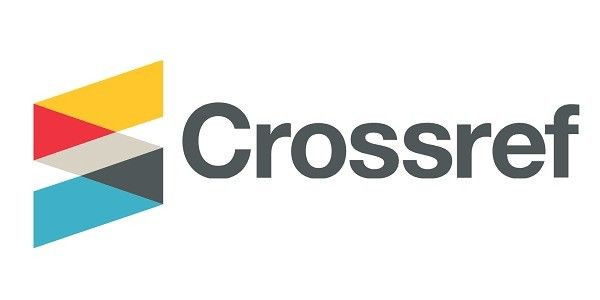
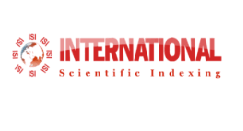

p (1).png)

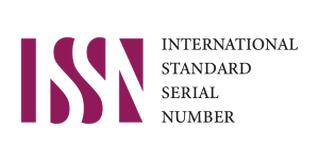
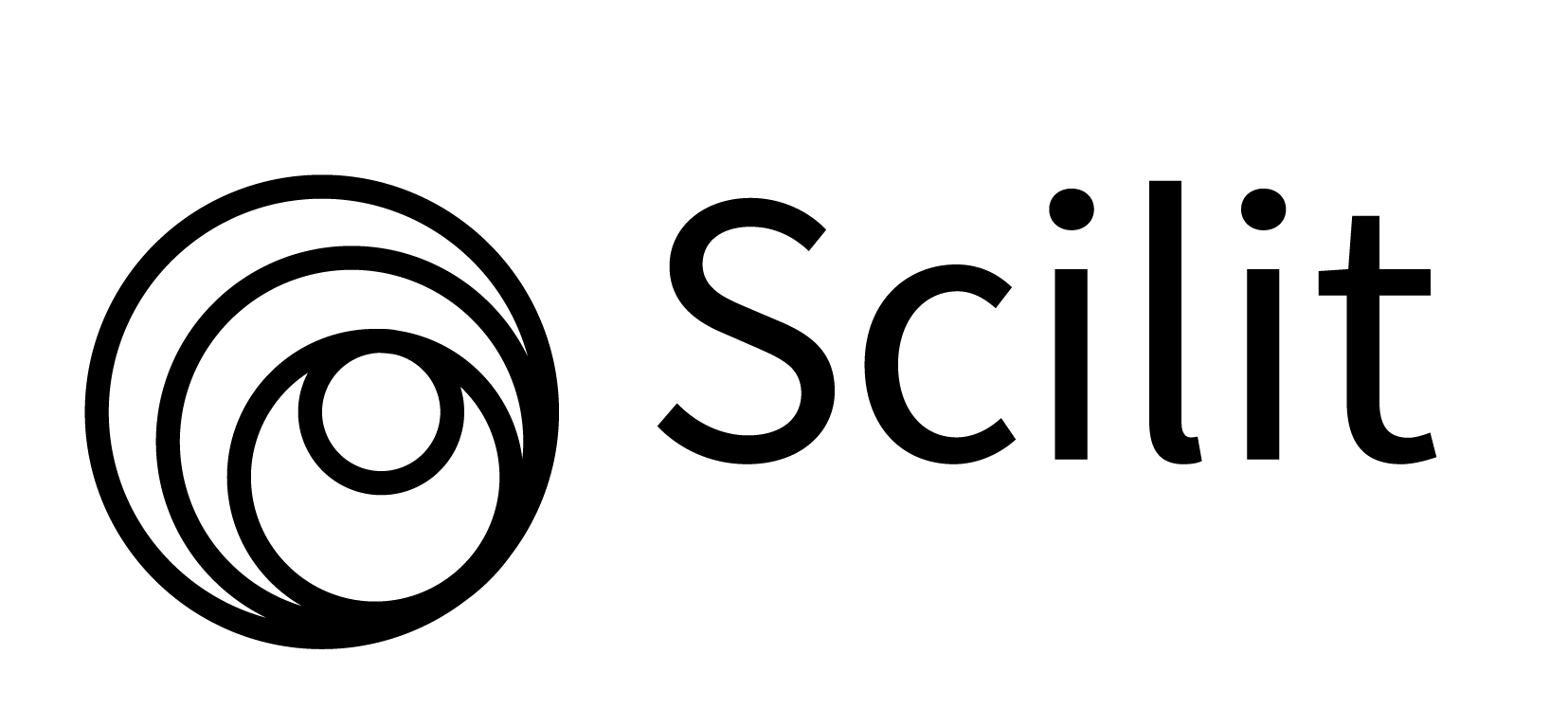
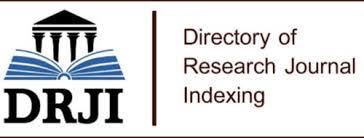
.png)




.png)
